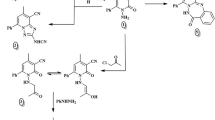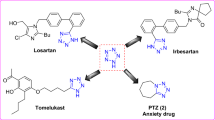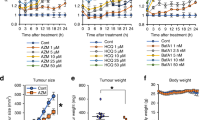Abstract
WHEN p-dimethylaminoazobenzene and certain other azo-compounds are administered to rats, either by feeding or by injection, liver tumours are produced in a high percentage of the animals1. This behaviour is in sharp contrast to the carcinogenic polycyclic compounds, which produce tumours mainly at the site of injection2. In this connexion it is significant that Miller and Miller3 have found that p-dimethylaminoazobenzene becomes firmly bound to a cellular constituent in rat's liver, but that no such fixation occurs in other tissues in which this substance is not carcinogenic. Numerous azo-compounds are now known to be liver carcinogens; but the property is a relatively specific one. It has been suggested by Pullman4 that the cancer-producing activity depends on the presence of an optimum electronic charge on the azo linkage itself (called the K′ region), and that the magnitude of the charge is governed by the substituents present. It seemed of interest to examine this hypothesis by studying the rate of addition of electrophilic reagents to this region in a series of carcinogenic and related non-carcinogenic azo-compounds.
This is a preview of subscription content, access via your institution
Access options
Subscribe to this journal
Receive 51 print issues and online access
$199.00 per year
only $3.90 per issue
Buy this article
- Purchase on SpringerLink
- Instant access to full article PDF
Prices may be subject to local taxes which are calculated during checkout
Similar content being viewed by others
References
Kinosita, R., Trans. Jap. Path. Soc., 27, 665 (1937). Cook, J. W., Brit. J. Nutrition, 1, 245 (1948).
For a review, see Badger, G. M., Brit. J. Cancer, 2, 309 (1948).
Miller, E. C., and Miller, J. A., Cancer Res., 7, 468 (1947).
Pullman, B., C.R. Acad. Sci., Paris, 222, 1501 (1946); 224, 1773 (1947). Pullman, A., and Pullman, B., Rev. Sci., Paris, 84, 145 (1946).
Angeli, A., Atti Accad. Lincei, 24 (1) 1190 (1915).
Boëseken, J., and Stuurman, J., Rec. Trav. chim., 56, 1034 (1937).
Friess, S. L., J. Amer. Chem. Soc., 71, 2571 (1949).
Cumming, W. M., and Steel, J. K., J. Chem. Soc., 123, 2464 (1923). Cumming, W. M., and Ferrier, G. S., ibid., 125, 1108 (1947).
Swern, D., J. Amer. Chem. Soc., 69, 1692 (1947).
Badger, G. M., Nature, 165, 647 (1950). Coulson, J. Chem. Soc., 2252 (1950). Coulson, C. A., and Longuet-Higgins, H. C., Proc. Roy. Soc., A, 195, 188 (1948).
Cook, J. W., Hewett, C. L., Kennaway, E. L., and Kennaway, N. M., Amer. J. Cancer, 40, 62 (1940).
Author information
Authors and Affiliations
Rights and permissions
About this article
Cite this article
BADGER, G., LEWIS, G. Rates of Oxidation of Azonaphthalenes. Nature 167, 403–404 (1951). https://doi.org/10.1038/167403a0
Issue date:
DOI: https://doi.org/10.1038/167403a0



